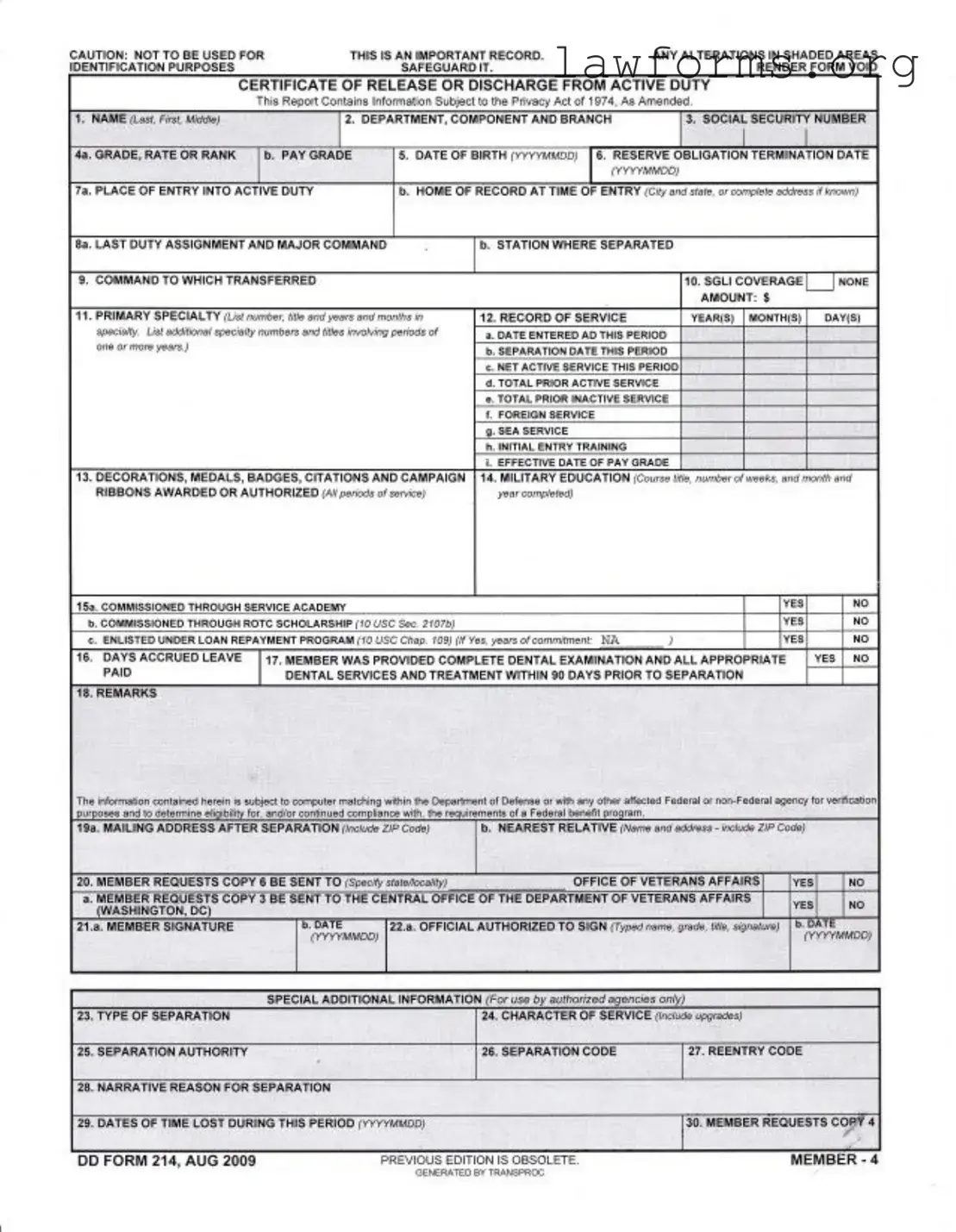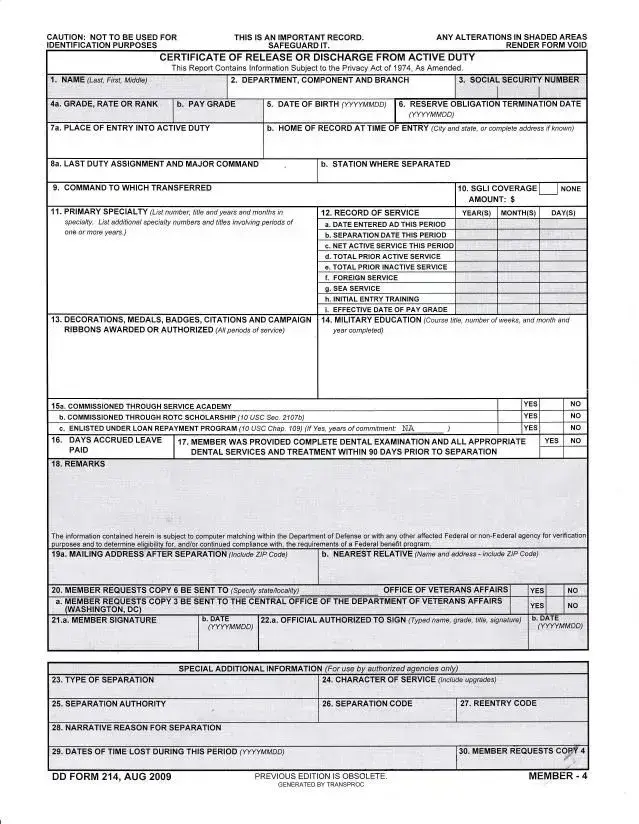Fill Out a Valid Dd 214 Template
The DD Form 214 is a vital document that certifies a service member's release or discharge from active duty in the United States Armed Forces. This form contains essential information, including the individual's service record, character of service, and details regarding any awards or decorations received. It is crucial for veterans to safeguard this record, as it plays a significant role in accessing benefits and services after military service.
For assistance in filling out the form, please click the button below.
Customize Document Online

